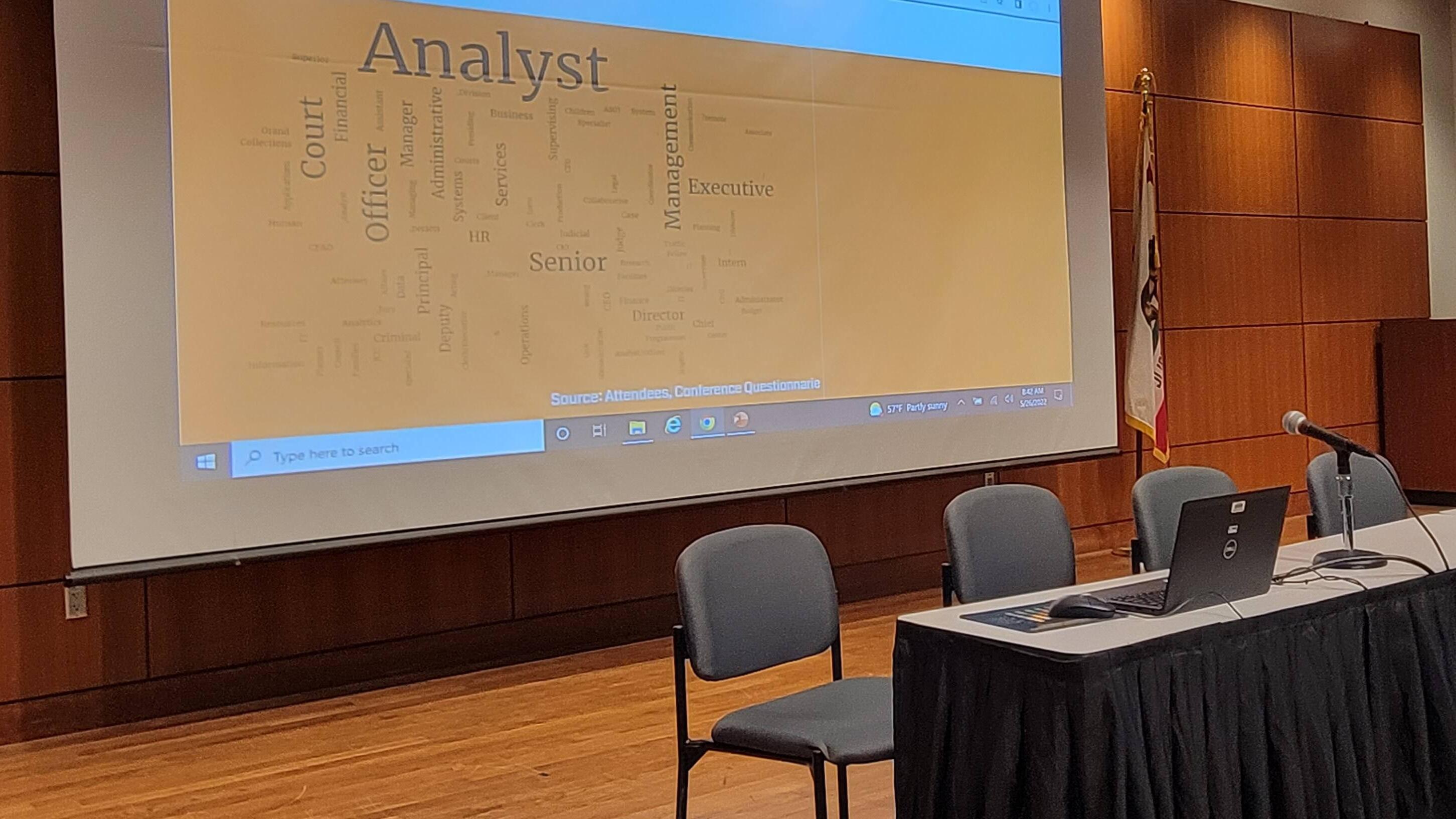Courts Continue to Improve How They Use Data to Provide Better Service to Public
In Los Angeles, the superior court designated specific courtrooms to hear domestic violence restraining orders to better streamline its family court calendars.
In Monterey, the court changed when it heard certain case types to help ensure interpreters are available to limited-English-speaking litigants.
And in Santa Barbara, the court is working to become more efficient in how many people it calls for jury duty each day.
The courts in Los Angeles, Monterey, and Santa Barbara all used data they collected to support changes to their processes, which not only improved their internal operations, but improved the experience for court users.
Courts Share How They’re Making Data-Informed Decisions
More than 200 court professionals from 42 courts came together to share best practices and resources at a June 21-22 statewide data analytics summit hosted by the Judicial Council of California. Like a data summit held last year, this year’s event built on the progress already made to establish a court community around data management and analytics.
“There is so much more that we can do now with data,” said Humboldt County Judge Joyce Hinrichs, chair of the council’s Data Analytics Advisory Committee. “The summit is an opportunity for courts to be part of a branchwide conversation on data analytics so we can improve our services to the public.”
Data Helping Judges Make Pretrial Release Decisions
One of the many presentations at the summit included a look at the Alameda trial court’s automated system that collects data from multiple sources to populate a risk assessment and pretrial report. The result is a more comprehensive report that provides extra information for judges when they decide whether to release individuals booked into jail but still awaiting trial. The data includes a defendant’s criminal history, convictions, and previous failures to appear.
The Alameda court’s system also helps it track the progress of defendants granted pretrial release, including time awaiting trial and failure to appear and rearrest rates. The court shares this data with its leadership to help improve its pretrial release decisions and processes, which ultimately aim to protect the public, ensure defendants will appear for court proceedings, and establish appropriate monitoring conditions if defendants are released.
Judicial Council Supporting Courts in Data Analytics Efforts
In addition to organizing summits and statewide meetings, the council assists courts in additional ways to help them use data to analyze their operations and services.
Courts can take advantage of council-created data dashboards, trainings, and pilot programs. Those pilots include efforts such as the pretrial program, improving jury management, and an online ability-to-pay tool that low-income litigants can use to request reductions in fines and fees.
“Data analytics is not just a tech project,” said San Bernardino County Judge Kyle Brodie, the summit’s keynote speaker. “It’s also evidence of our court values, reflected by what questions we’re attempting to answer by looking at the data.”


